We call the __init__() function while instantiating the class. That is exactly what python's __init__ does, so i see nothing wrong with calling it a constructor.
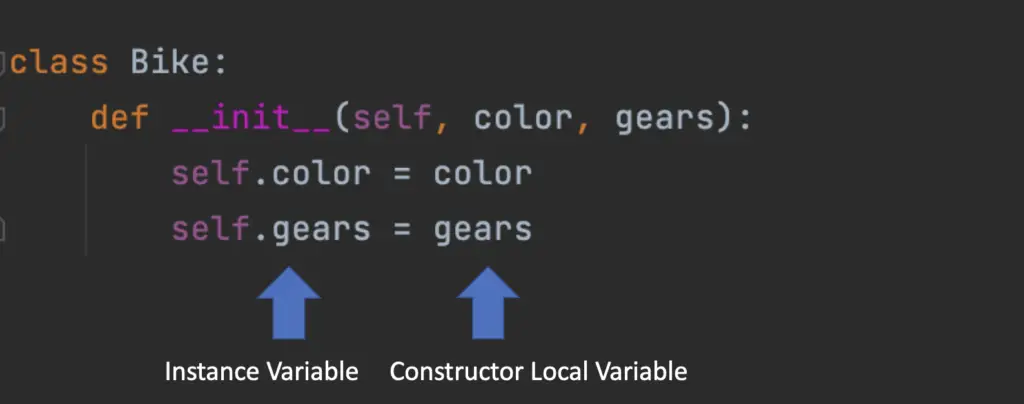
Basic Oops Concepts In Python
Ad take your skills to a new level and join millions of users that have learned python.
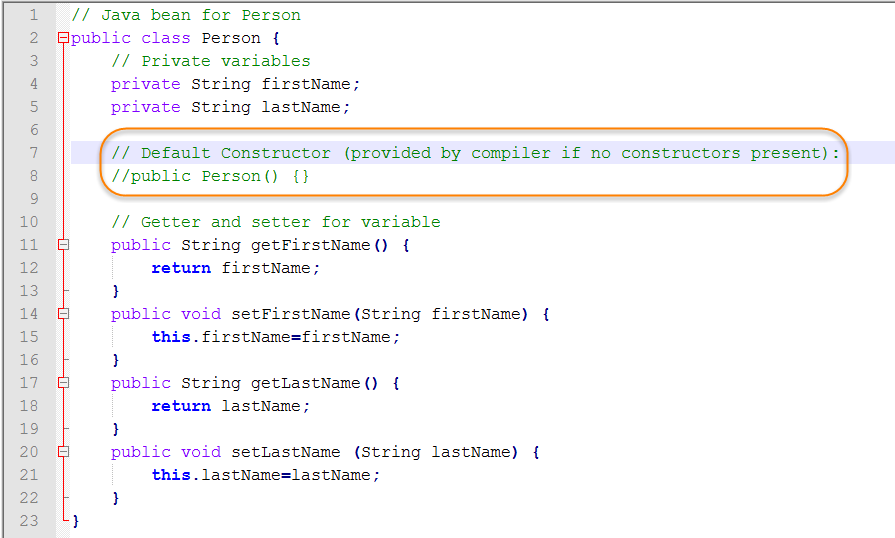
Python class constructor return value. Tired = tired def __repr__(self): Self.baz = baz # adding two objects def __add__(self, obj2): Print 'hello {0}'.format(bar) return 'foo' + baz from multiprocessing.pool import threadpool pool =.
Return self.baz / obj2.baz # get the. A class can have one constructor __init__ which can perform any action when the instance of the class is created. The task of constructors is to initialize(assign values) to the data members of the class when an object of the class is created.
While this is a default function for every class, we can definitely play around with it. Whenever we make a call to the class constructor, it makes a call to __new__. In python the __init__() method is called the constructor and is always called when an object is created.
At the point when the constructor is called, the object already exists; It will set custom values for instance variables. If the value isn’t the object that’s been created, the.
Self.bikecolor = color return self #it should return an instance of the class; A constructor is defined and executed when an object of the class is created. To not do so would be inconsistent with the use of that term in the.
Learn key takeaway skills of python and earn a certificate of completion. # constructor def __init__ (self, name, age. # body of the constructor.
The constructor is not responsible for allocating or creating the object, only initializing its fields. Example of python return statement class pythongeeks: __new__ is a static class method that lets us control object creation.
So in smalltalk, the constructor has to return a value or object creation won’t happen. Mybike = bike(blue) when i do the above, i get the following error: Learn key takeaway skills of python and earn a certificate of completion.
Now consider an example : # initializing instance variable self.num=100 # a method def read_number(self): When a class is created without a constructor, python automatically creates a default constructor that doesn’t do anything.
In python, the object creation part is divided into two parts: Syntax of constructor declaration : Return self.baz * obj2.baz # dividing two objects def __truediv__(self, obj2):
This constructor can be made to different functions that carry out different actions based on the arguments passed. In smalltalk, new isn’t a keyword; Return self.baz + obj2.baz # subtracting two objects def __sub__(self, obj2):
We can pass the values (data) during object creation. However, we can also use a parameterized constructor to initialize the data members with a customized value within a class. Python expects the constructor to return none and fails if it returns anything else.
The class’s new method creates an object and returns it. Print(self.num) # creating object of the class. Defining constructor method in a class.
Python magic method __init__ is used to implement the constructor. Java constructor returns a value, but what? Object creation is controlled by a static class method with the name __new__.
I need to return an instance of bike in the constructor. Constructor should not return any values. Ad take your skills to a new level and join millions of users that have learned python.
The default constructor in a class is invoked at the time of object creation. Example parameterized constructor in python. User can override default constructor by implementing the __ init__ method.
Since returning only none is useless, we never use a return statement in the constructor in python. The constructor is a block of code that is used to initialize the instance variables within the class. Simple example code accepts the arguments during object creation then such types of constructors are known as parameterized constructors.
Return pythongeeks geek = pythongeeks() It’s a message you send to a class (which is itself an object). The constructor is being invoked when we create the object of the class (obj in the following example).
Python provides the __init__() function that simulates the class constructor. Fwiw, the multiprocessing module has a nice interface for this using the pool class. Hence when you call example(), to create an object of the class example, then the __new__ method of this class is called.
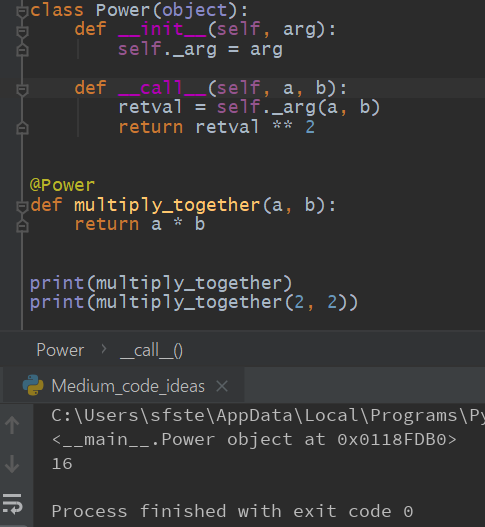
Using Class Decorators In Python An Example-led Guide To Using Class By Stephen Fordham Towards Data Science

Python Class Constructor Code Example
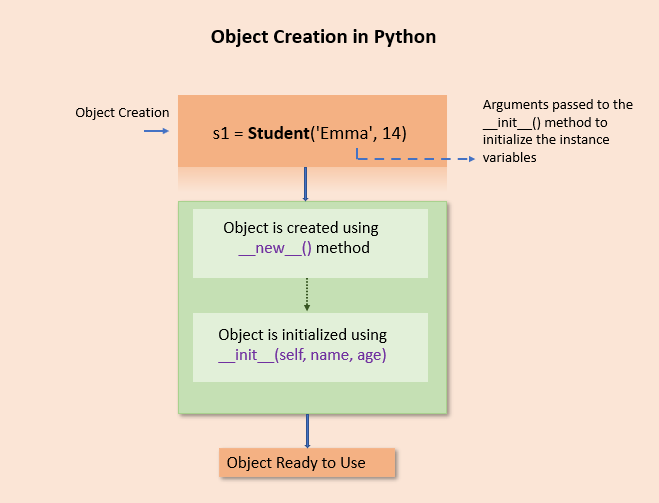
Constructor In Python Guide Pynative
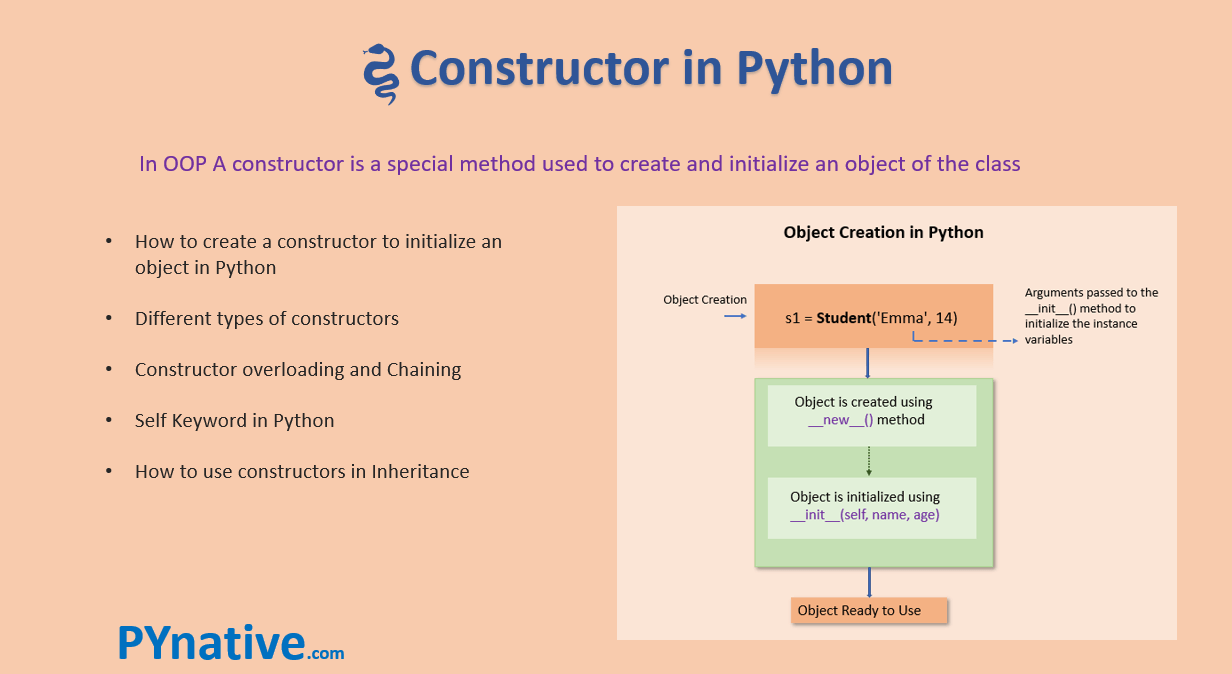
Constructor In Python Guide Pynative

Python Class Definition Code Example

Constructors In Python - Python

Python Class Constructor Default Parameterized - Developer Helps
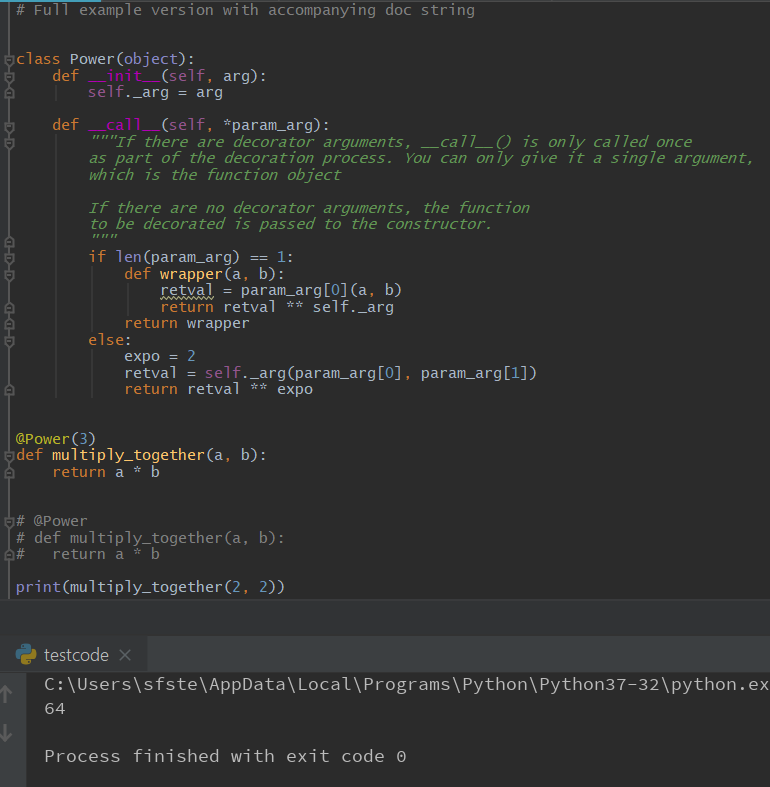
Using Class Decorators In Python An Example-led Guide To Using Class By Stephen Fordham Towards Data Science

When Is An Object Initialized In A Python Constructor Expression - Stack Overflow

Type-hinting For The __init__ Function From Class Meta Information In Python - Stack Overflow

Python Program - Type Of Class Members - Youtube

What Is __init__ In Python Finxter
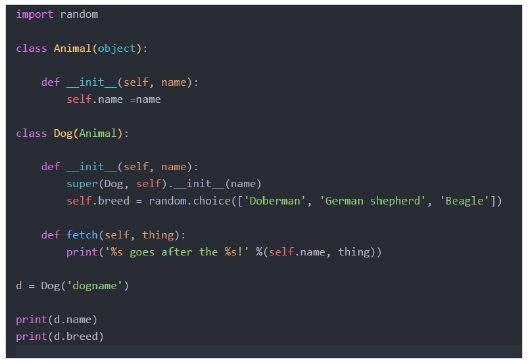
Inheritance And Polymorphism

Constructor In Python Working Of Python Constructor Wih Sample Code

Object-oriented Programming In Python
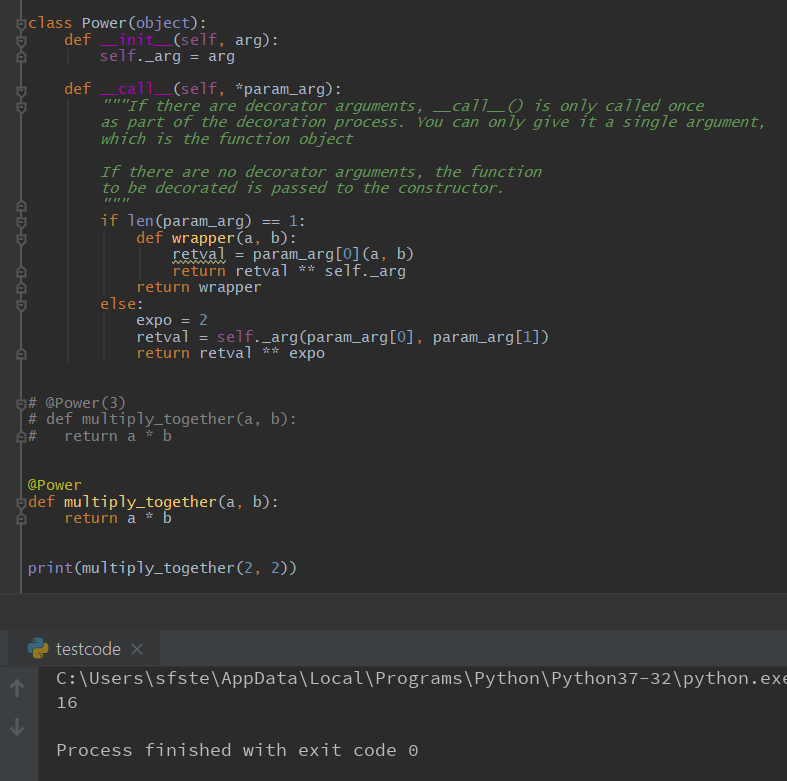
Using Class Decorators In Python An Example-led Guide To Using Class By Stephen Fordham Towards Data Science

Constructor In Python - Python Guides

Constructor In Python - Python Guides

How Default Base Class Constructors Are Used With Inheritance Webucator